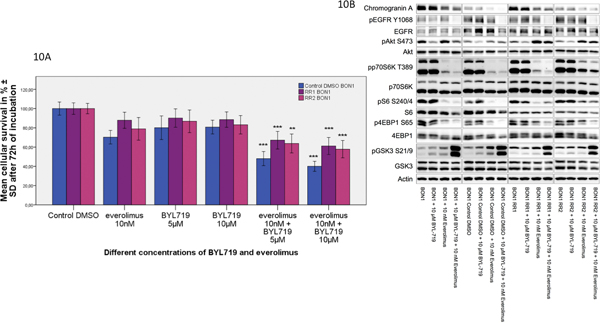Fig. 10.
Dual-targeting approach with the PI3Kα inhibitor BYL719 overcame acquired everolimus resistance and restored sensitivity through inhibition of GSK3, EGFR, p70S6K and 4EBP1 signaling. (A) Combination treatment of everolimus plus BYL719 showed a significantly enhanced inhibitory effect on cell viability compared to single substance treatment in all tested cell lines. Cells were incubated with BYL719 (5 μM and 10 μM) and everolimus (10 nM) alone and in combination for 72 h. The arithmetic means and standard deviation of at least three independent experiments are shown. Statistically significantly different results in comparison to either single substance treatment are shown, considering p<0,05 = *; p<0,01 = **; p<0,001 = ***. (B) Protein levels of components from the EGFR-Akt (pEGFR, EGFR, pAkt, Akt), mTORC1-p70S6K (pp70S6, p70S6K, pS6, S6, p4EBP, 4EBP1) and GSK3 (pGSK3, GSK3) signaling pathway are displayed. Inhibition of GSK3, EGFR, p70S6K and 4EBP1 signaling was observed after combination treatment. A representative blot out of three independently performed experiments is shown.

